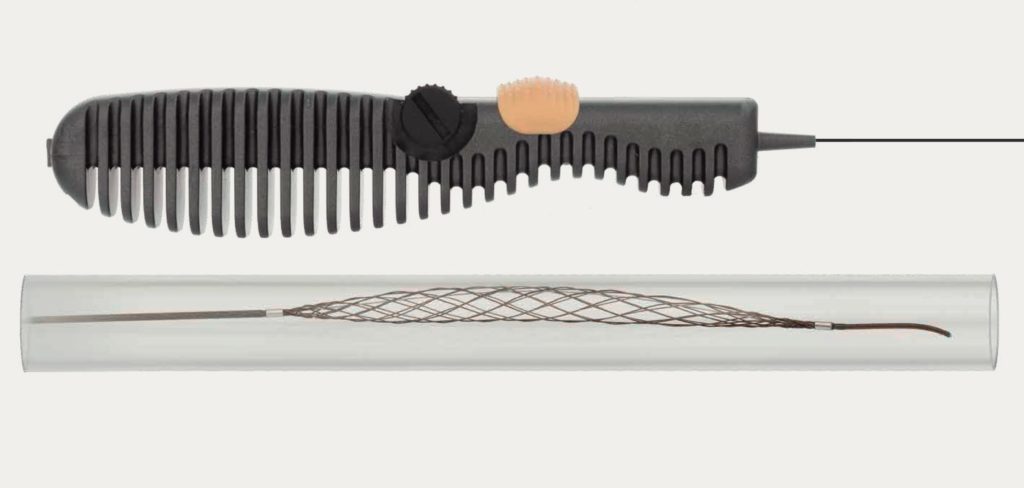UVA Director of Cerebrovascular and Endovascular Neurosurgery Min Park, MD, was the first surgeon in the state of Virginia to utilize the Comaneci, a new device designed to further advance the endovascular treatment of cerebral aneurysms. “This is another tool that we can offer, particularly for aneurysms that are more complicated for us to treat,” says Park.
Overcoming Limitations of Coiling
Coiling, the introduction of small platinum coils via a microcatheter into the aneurysm to obstruct blood flow, has steadily become the go-to treatment for cerebral aneurysms because of the advantages it offers over surgical clipping, including no skull incision, less blood loss and faster recovery. Yet, when an aneurysm is particularly large or if it has a wider neck, coiling can be a challenge.
“Depending on how the aneurysm is shaped, there can be a risk of the coils protruding into the blood vessel after insertion,” says Park. “This is a serious problem because it can cause strokes.”
Devices and techniques to prevent this complication have been successful thus far, but not perfect. Balloons mounted on catheters can be inflated within the vessel at the site of the aneurysm to hold the coils in place. The limitation: obstruction of blood flow temporarily, which can cause stroke. Stents also may be placed within the vessel to cut off the flow of blood to the aneurysm. The shortcoming here: the stent remains in the vessel and necessitates the use of blood thinners, which aren’t tolerated well by all patients.
Comaneci: How It Works

The Comaneci is a type of stent resembling a chain-link fence miniaturized and rolled into a cylinder. Like other stents, it is delivered through the parent artery to the site of the aneurysm via a microcatheter and provides a scaffolding that keeps coils in place. The key difference is that this device can be removed once the coils are positioned appropriately. Patients must take blood thinners briefly prior to the procedure, but not after, and recovery time is minimal, with most patients discharged after one day. (See the device in use in these videos by Rapid Medical)
“The Comaneci device supports the coiling procedure safely without occluding blood flow, but we can remove it,” says Park.
The Comaneci device was approved by the U.S. Food and Drug Administration in May 2019. As with any new device, it will take time to assess its full potential. Yet, Park says he’s hopeful this may be a solution for more patients. “The biggest issue is that we’re early in our experience, so we don’t have a wealth of cases to compare it to,” he says. “As with all surgeries, this procedure must be done carefully with the right precautions in place to prevent complications.”
Referring Your Aneurysm Patients
Park is one of two UVA neurosurgeons fellowship-trained in both neurointerventional and open surgical treatment for aneurysm and cerebrovascular pathologies. He also underwent additional training mandated by the FDA for the Comaneci to understand the design implications, use and risks of the device.
“There are multiple factors to consider when determining the best management strategy for cerebral aneurysms. This may not be the best option for everyone. Patients should be referred to a neurosurgeon who can evaluate the need for treatment or observation; it’s a very nuanced discussion,” says Park.
“As the region’s only Comprehensive Stroke Center, UVA is one of the few centers with the capability to take on even the most challenging types of vascular issues — not just aneurysms, but arteriovenous malformations, arteriovenous fistulas, ischemic stroke, spinal stenosis and more.”
To refer a patient to UVA Health, call UVA Physician Direct at 800.552.3723.